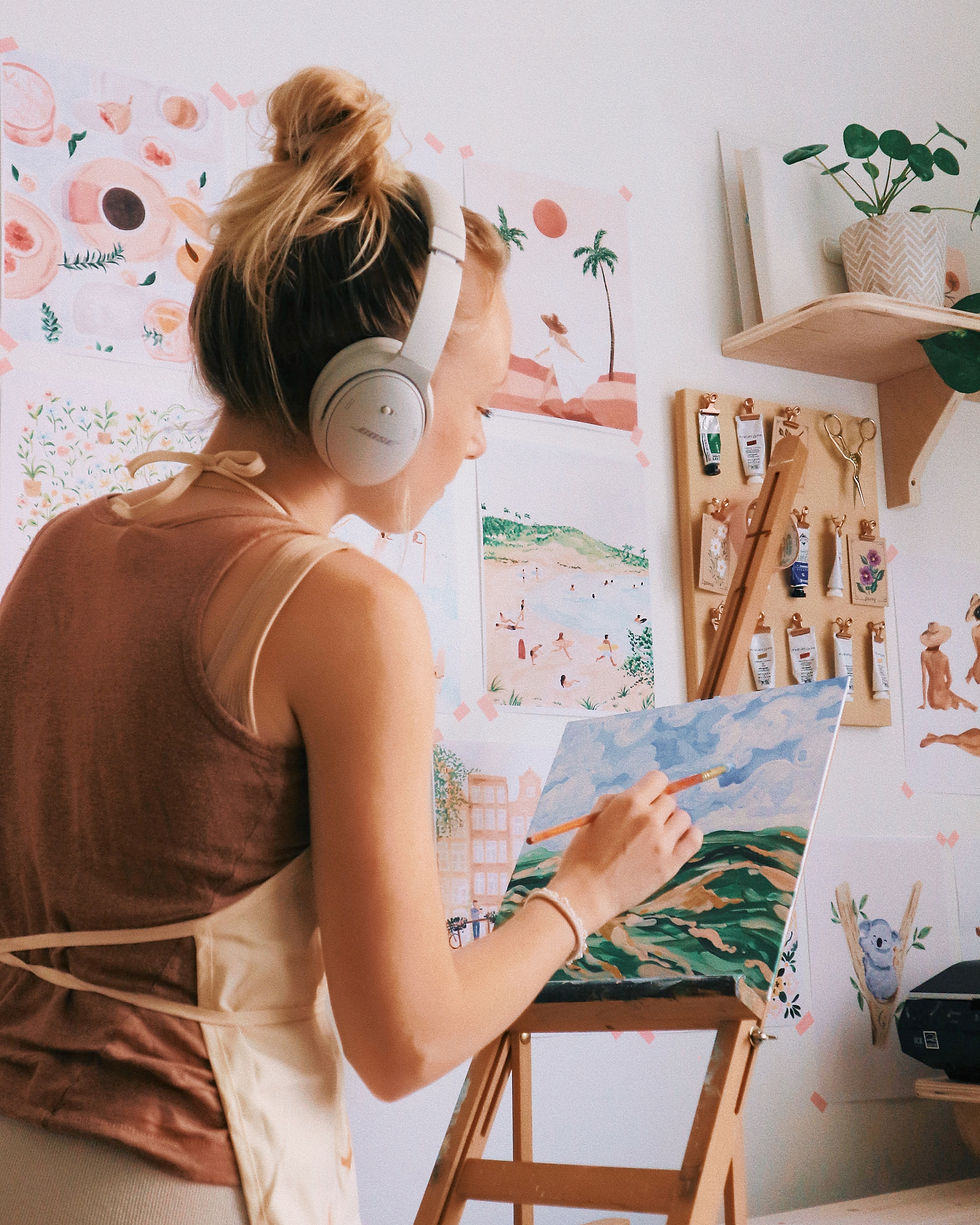Hello dear friends, I hope you're having a great start to 2023 (or whenever you're reading this!). I've been.. well... not busy, but in my studio, studying, painting, studying more, packing orders. I haven't been much on instagram as I mentioned in a previous post, that I am taking some time away from the platform while I figure out my painting style so as to not be too influenced by other artists I love.
I wanted to share a few things I have learned so far with you, perhaps it can help you in your creative journey too (or if you're just curious!).

1. Adding a background wash helps unify colours. I love doing this. There's a concept in art called "mother colour" where you choose one colour to add to each of your paint mixes for an entire painting. The idea here is that it unifies all the colours together (it really does!). However, I find it hard to remember to add this colour, or I do it instinctively, like adding yellow ochre, I seem to do that a lot to tone down the saturation of my paints a little bit as well as warm them up. Adding a mother colour to each mixture might be hard to remember when you're in the zone, but the good news is that you can just add a background wash to your canvas first and it has a similar effect! I use a peachy pink wash on all my canvases so far and I love it. You can also try darker colours if you want more contrast, or many oil painters seem to use burnt umber because it has a natural tone and helps
you judge the brightness & saturation of the colours you're putting on the canvas. Ideally, you just want to use a colour that is either going to "neutralize" your colours to make them a little less storybook bright OR to stylize your canvas and add to your "branding", meaning it's an intentional part of the painting that will show through the final piece.
2. Sketching with a paintbrush is much more fun!

I use a round brush, usually around size 4 for smaller canvases and sketch my composition using yellow ochre. I love this process way more than sketching with a pencil because you don't feel like you have to get into every detail, which to me is the best and most important part of painting. It's unnecessary to paint every detail we see with our eyes, there are cameras and photos for that (unless realistic painting is your thing!). When I'm sketching and painting, I hold by brush almost at the very end of the handle to keep it loose and also stay back from the canvas so I'm viewing it from afar. Not many people will be looking at your canvas from 2 inches away, so you don't need to paint that close either. Doing so will result in a stiff painting that might be confusing and not draw attention when seen from afar. Another great thing about painting like this is that if you don't succeed with your sketch you can either paint over it or wipe it away and start over.
3. Colour theory can seem complicated, but it doesn't have to be!

I've tried to make paintings based on the colour wheel combinations but it just gives me a headache. The one thing I've noticed is that I tend to group colours together and I'm very drawn to analogous colour schemes that are in high key (light!). This is evident in many impressionist paintings, it just means you use 3-5 colours on the colour wheel that are close together. I know some art teachers might cringe at this sentence, but honestly go with what feels right. Maybe it's just me, but when I spend so much time trying to plan my paintings instead of just painting I'm not usually very happy with the result. Trust your instincts when it comes to colour choices. Keep a log of art that catches your eye, I'm sure you'll notice some overlap in the colours used.
4. Use a glass paint palette

I hate the thought of tearing away and throwing out so much paper from those paper palettes, I only use it when I am painting outside of the studio (because carrying around a big sheet of glass isn't exactly a smart thing to do). All you need is a smooth glass surface, I use a glass cutting board I found on Amazon like this one. Then, all you need to do is use it as you would a normal paint palette to mix all of your colours, and when it's time to clean it, use a spray bottle like these ones I use to mist the surface of the palette, then use a window paint scraper (this can be found for less than $5 at your local hardware store, or here) to scrape off the paint and throw it away. This seems to me like the best way to reduce waste when painting with acrylics, plus is much less expensive than buying new paper palettes all the time!

コメント